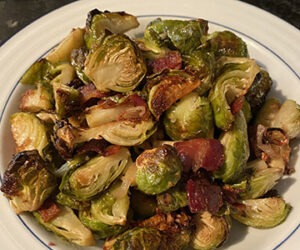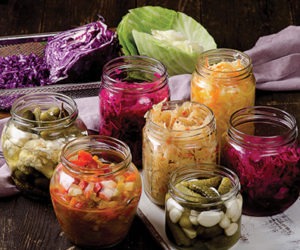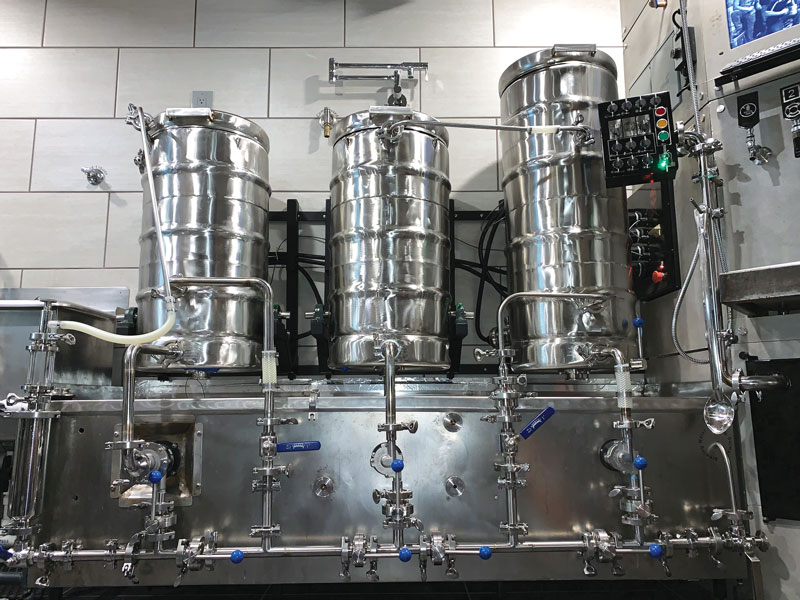Make Your Own Cheese At Home: Tips From the Pros
You make your own beer, but have you tried making cheese to go with it? Use these tips to get started on a new hobby or expand your cheesemaking skills.
Cheesemaker: Sarah Carroll is the Head of Operations at the New England Cheesemaking Supply Company
If there’s a dairy product you enjoy on a regular basis, you can make it. We often hear apprehension when someone is new to cheesemaking and that’s understandable. We’re here to say, you can do it! A simple batch of yogurt is quick and easy, plus you’ll gain an understanding of what you’re consuming. Do you enjoy a bagel with cream cheese in the morning? Try making cream cheese; perhaps you’ll enjoy it even more without all the preservatives and thickeners. Have you always wanted to make feta? You can, right in your own kitchen, and it’s amazing!
The most important principles of cheesemaking are having fun, cleanliness and taking notes. Similar to homebrewing, you will want to have a clean surface and sanitized equipment while making cheese. Providing an optimal environment for healthy bacteria growth from start to finish will help your cheese to flourish.
If you’re new to cheesemaking, I would suggest starting with a simple soft cheese, such as fromage blanc, cream cheese, or mascarpone. These are easy to make and provide almost instant gratification. With a gallon of milk, about 30 minutes, simple ingredients, and a quiet place for your cheese to set overnight, you’ll become a cheesemaker. If you’re looking for the next step, colby is a great choice since the make process is straightforward and only needs a short aging time. A cheese like colby will walk you through the cheesemaking process and get you hooked on the whole experience. Of course, pick a cheese that you enjoy eating because that’s truly the best part of home cheesemaking.
If I’m short on time, soft cheese is my top choice, but what I really enjoy is experimenting with new recipes. There can be so many different outcomes with the same recipe just by using a different type of milk, adjusting the culture, having a curd with more or less moisture . . . the possibilities are endless. I love tasting a new homemade cheese for the first time and making it again to see how the flavor changes as I continue to work with the recipe. There may be some trial and error as you perfect a new recipe. Taking good notes will help you track what worked and what didn’t from one batch to the next. To create a fantastic cheese more than once, you should keep track of your milk and ingredients, any recipe alterations, what the curds looked and felt like, etc. For many cheesemakers taking notes is one of the most important steps to making great cheese.
Some of the most common problems we hear about are issues with milk, usually due to purchasing ultra-pasteurized milk. Many times customers select organic milk assuming it’s a superior product. Unfortunately, we’ve noticed that organic milk is often ultra-pasteurized which won’t work for most cheesemaking. Our general rule of thumb is to buy milk as close to home as possible. Finding milk that was bottled within your own state rather than across the country usually means it had gentler processing. We have a great source for finding good milk on our site, “The Good Milk List.” It’s a list of suggestions from home cheesemakers who have found good milk locally.
Cheesemaker: Mary Karlin is a teacher of online cheesemaking course at Craftsy.com
When I teach “Beginning Cheesemaking” I include simple fresh cheeses such as ricotta, mascarpone, panir, and chevre, which are easy to make successfully with minimal skills, in a short amount of time. When you start with simple basic cheeses you’ll have success, feel accomplished, and want to make more! If you set your goal too high at first by maybe wanting to jump into a more complex aged or blue cheese as your first venture, you may not have positive results and won’t have the knowledge base to assess what took place in the cheese’s development. You first need foundational skills to be a successful home cheesemaker. Fresh basic chevre is very versatile. It can be enjoyed plain, flavored with fresh or dried herbs, encrusted or coated with peppercorns or powdered spices, or wrapped in grape or fig leaves and grilled.
When you get more experience, my favorites to make are pepato asiago, cabra al vino, and farmhouse cheddar. These require minimal attention once they are in the ripening stage and they don’t need to age for very long to taste delicious. I’m also crazy about blues but more time is required to oversee their development successfully.
Cheesemaking will attempt to teach you patience; you must dedicate enough time to your cheesemaking session to have success. Slow down, honor the process, and learn to assess what is happening in the pot. Over time you’ll become more intuitive with your cheesemaking based on what you see and smell. Other mistakes beginners make are: Not reading through the directions/recipes before starting a cheesemaking session, and attempting to make batches that are larger than they can successfully handle. I always promote starting with small, manageable batches that take no more than 2 gallons (7.6 L) of milk. You’ll have plenty of delicious cheese to share.Lastly, approach your cheesemaking with dedication, but have fun.
Cheesemaker: Nancy Vineyard was owner and avid cheesemaker at The Beverage People
Successful cheesemaking starts with the milk, your attention to sanitation, and following a quality recipe. Buy local whole milk if possible, raw or pasteurized, but not ultra-pasteurized. Pay attention to the sanitation of all equipment in contact with milk. Protect utensils from potential contamination with a new sheet of aluminum foil on the counter as a place to set your supplies. Work from “vetted” recipes from a reliable supplier of cheesemaking cultures. Avoid recipes from the Internet, especially YouTube videos, which are often flat-out wrong.
Your notes will really help you as you build the repertoire of cheeses you make. For instance, milk from goats in later lactation in the fall will yield less than spring milk. As the solids content of the milk, i.e. the protein, diminishes in later lactation, add more rennet to improve curd formation and setting. Other remedies to keep in mind: adding a bit more culture, increasing the “make” temperature or waiting longer. Choose one or more of these remedies for success in fall and winter cheesemaking.
One of the biggest mistakes I see from beginners is getting the right temperature. Temperatures for making and culturing cheese are critical. You must use a thermometer that you can recalibrate. An error of 3–5 degrees °F (2–3 °C) could cause curd formation to fail. Most failures happen with mozzarella making. The pasta filata — pulled curd cheeses — demand a lot of the proteins in the milk. Not only do you have to rearrange the proteins to make the curd, but then you stretch them out again to make the cheese strings or balls, which is done at very high temperatures. This is the source of most failures. The basic remedy for success with these cheeses is to add dry milk powder to the milk to improve the protein to fat ratio, leaving additional protein that isn’t all denatured to help with successful stretching. Using 1 Tablespoon per gallon (4 L) of milk should always be practiced as a preventative measure.



